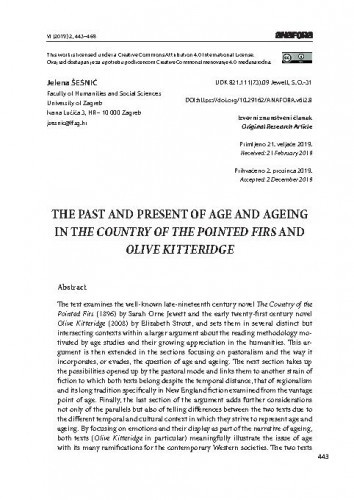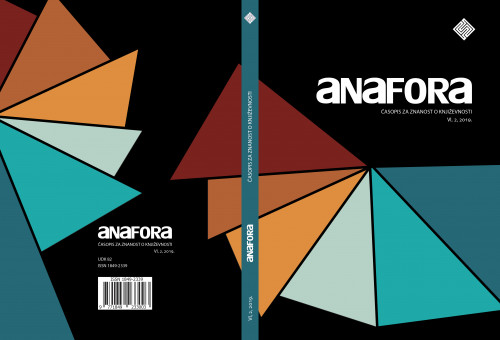The text examines the well-known late-nineteenth century novel The Country of the Pointed Firs (1896) by Sarah Orne Jewett and the early twenty-first century novel Olive Kitteridge (2008) by Elizabeth Strout, and sets them in several distinct but intersecting contexts within a larger argument about the reading methodology motivated by age studies and their growing appreciation in the humanities. This argument is then extended in the sections focusing on pastoralism and the way it incorporates, or evades, the question of age and ageing. The next section takes up the possibilities opened up by the pastoral mode and links them to another strain of fiction to which both texts belong despite the temporal distance, that of regionalism and its long tradition specifically in New England fiction examined from the vantage point of age. Finally, the last section of the argument adds further considerations not only of the parallels but also of telling differences between the two texts due to the different temporal and cultural context in which they strive to represent age and ageing. By focusing on emotions and their display as part of the narrative of ageing, both texts (Olive Kitteridge in particular) meaningfully illustrate the issue of age with its many ramifications for the contemporary Western societies. The two texts thus show a transition in American culture in the representations of age and ageing from its pre-scientific phase (in Jewett’s text) to the current medicalized and scientific view of age and its consequences (in Strout’s text).; Tekst razmatra klasični roman američke književnost s konca 19. stoljeća, The Country of the Pointed Firs (Kraj šiljastih jela, 1896), spisateljice Sare Orne Jewett i roman Olive Kitteridge, spisateljice Elizabeth Strout, s početka 21. stoljeća (2008) te ih postavlja u međusobne kontekste unutar interpretacije inspirirane studijima starenja i njihove sve veće prepoznatljivosti u humanistici. Ovaj se argument potom dopunjuje pojmom pastoralizma, osobito s obzirom na to kako uključuje ili isključuje pitanja dobi i starenja. Oba se teksta potom stavljaju u kontekst regionalne proze i njezine duge tradicije osobito u prozi Nove Engleske, promatrano iz očišta dobi. Konačno, značajne sličnosti ali i razlike između oba teksta nadaju se razmatranju na koji način različiti vremenski i kulturni konteksti utječu na prikaz osjećaja i njihova izražavanja u njima. Promotrene razlike ilustriraju na koji način pitanje starenja, i njegove brojne popratne pojave, utječu na suvremena zapadna društva. Oba teksta, dakle, pokazuju prijelaz u američkoj kulturi od prikaza dobi i starenja u predznanstvenoj fazi (Jewett) do suvremenoga medikaliziranog i znanstvenog pogleda na starost i njezine posljedice (Strout).
Sažetak

 Anafora : časopis za znanost o književnosti = [academic literary journal] : 6,2(2019) / glavni i odgovorni urednik, editor-in-chief Ružica Pšihistal.
Anafora : časopis za znanost o književnosti = [academic literary journal] : 6,2(2019) / glavni i odgovorni urednik, editor-in-chief Ružica Pšihistal.